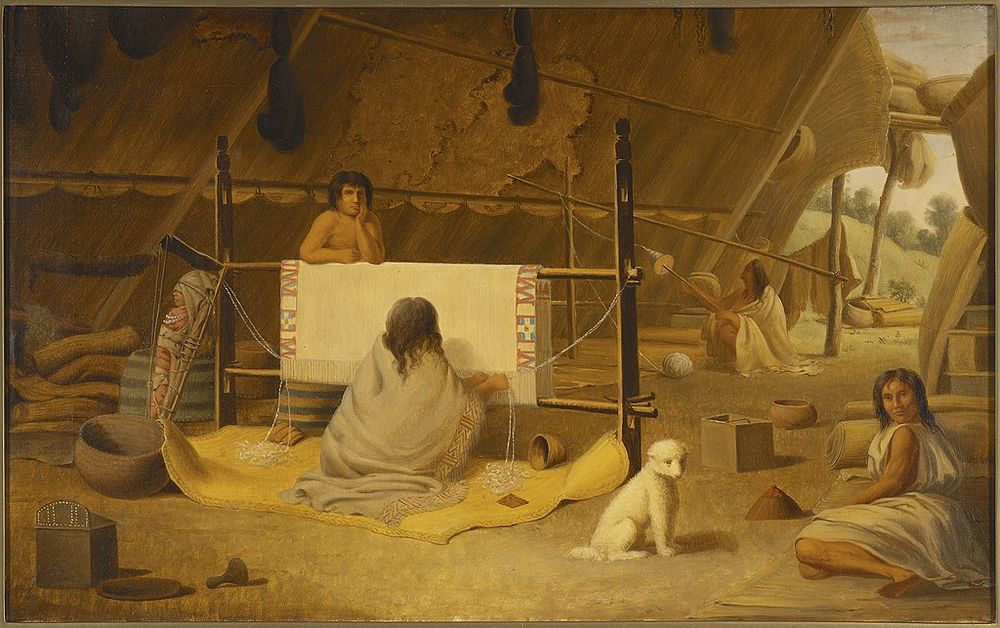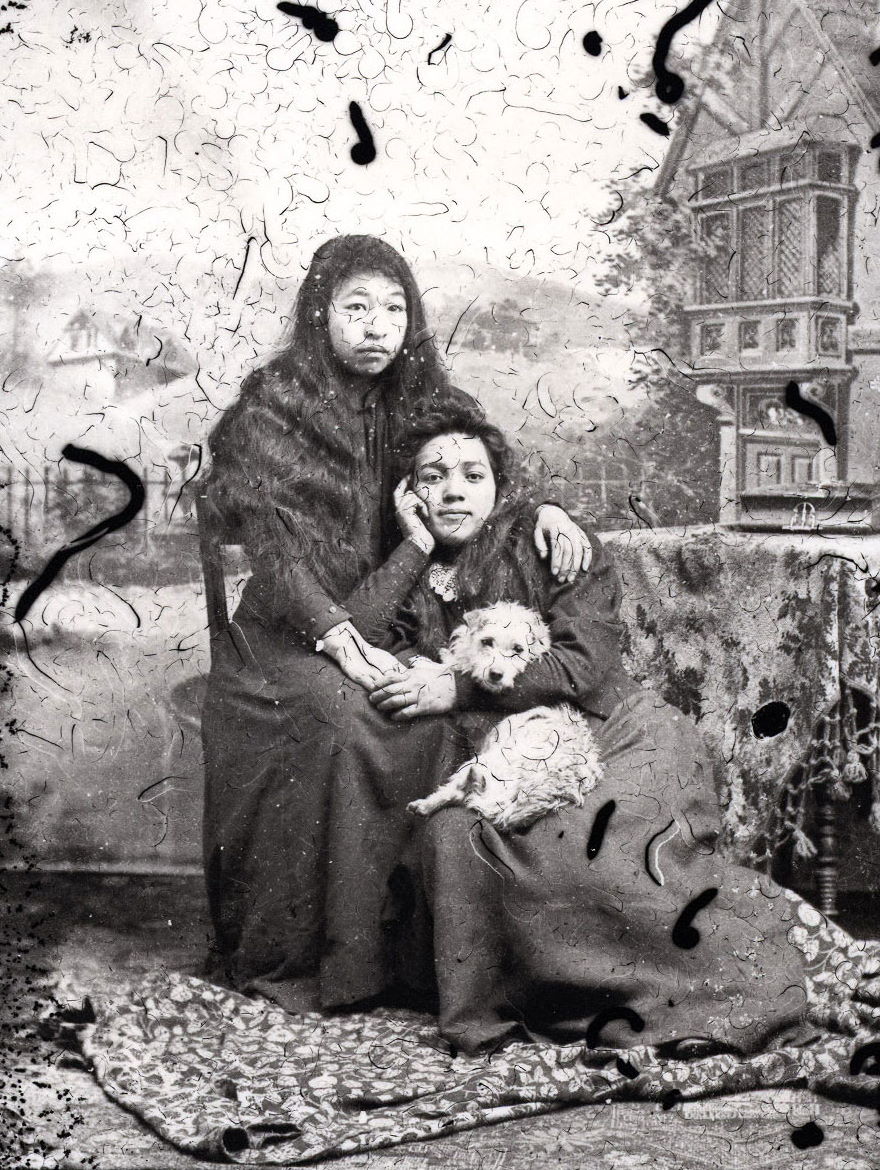When Spanish explorer Juan Francisco de la Bodega y Quadra (1744-1794) was exploring the Salish Sea and its coasts in 1791, he was astonished to find a civilization dressed in woven woolen clothing. Up to that point, every indigenous person he and his crew had encountered along the Pacific coast had been wearing skins and furs. There were no mountain goats in the region, so what could have been the source of these plush white wool? They noticed many dogs that appeared to be shorn, and concluded that the wool must have come from these canines. Soon they would learn that the dogs were an integral part of Salish trade and prosperity.
A Salish wool dog seats as a Coast Salish women weaves. Painting by Paul Kane (1810–1871)
The Salish wool dog has been described as a small, white, long-haired dog with prick ears, curled tail, fox-like face, and a thick coat. Their long, white or light brown hair was excellent for yarn, since these lighter colors were more accepting of dyes and their fine strands were easily spun. When Captain George Vancouver encountered them during his famed 1791–95 expedition of the Pacific Coast, he reported that their fleeces were so compact that “large portions could be lifted up by a corner without causing any separation.”
Salish people raised these small dogs in pens on isolated islands, separating them from the community’s other dogs so they would not interbreed and diminish the quality of their valued fleece. The dogs were also given a different diet, fed mostly sockeye and humpbacked salmon, both fresh and dried. The dogs lived on the islands alone throughout the spring and summer. In autumn, when the fur had grown long and thick, their owners returned to shear them using mussel-shell knives. The fur was mixed with various plant fibers and then spun into yarn for ceremonial blankets, which were valued items in pre-colonial Salish economy and culture. The wool was also traded with neighboring communities for other valuable goods.
Two women pose with their wool dog. Photo: Chilliwack Museum and Archives
Keeping wooly fed dogs required diverting a substantial and expensive part of the salmon supply meant for people. So when the indigenous people found an alternative in machine-made blankets from mills in the British Isles and New England, with the establishment of fur-trading posts at the Fraser River and Nisqually deltas in 1820s, they quickly abandoned their wooly dogs. By the middle of the 19th century, wooly dogs had become extinct, although Coast Salish women continued to make their living from textiles well into the 20th century—just not with dog wool.
Textiles made from woolly dog hair are rare in museum collections today. Part of the difficulty is identifying. Determining what kind of wool was used to weave textiles is nearly impossible without subjecting them to microscopic analysis. One of the tools textile conservator Susan Heald and conservation scientist Caroline Solazzo at Smithsonian’s Museum Conservation Institute uses for analyzing textiles is the protein mass spectrometry. Heald explains that “dog hair would have a different protein fingerprint than goat hair or sheep hair, and proteomic analysis quantifies those differences.” Compared to microscopy, which relies on a hair’s morphological features, or structure, she says “proteomics can offer more specificity, especially when a fiber’s morphology is altered by age and physical damage.”
Intact pelts of the Salish wool dog are rarer still. The only surviving pelt of the wooly dog, belonging to a dog named Mutton, is at the Smithsonian’s National Museum of Natural History. The pelt was acquired in 1859 but remained forgotten tucked inside a drawer at the at the Smithsonian, until it was discovered in 2002 by historian Candace Wellman. Elaine Humphrey, a scanning electron microscope specialist at the University of Victoria, matched fibers from Coast Salish blankets to fibers from Mutton’s pelt and confirmed the authenticity of the pelt.
The pelt of a wool dog named Mutton now at the Smithsonian National Museum of Natural History.
References:
# Russel Barsh, Coast Salish Woolly Dogs, History Link
# Regan Shrumm, Salish Woolly Dog, The Canadian Encyclopedia
# Patricia Jollie, A Woolly Tale: Salish Weavers Once Raised a Now-Extinct Dog for Its Hair, American Indian Magazine
# Virginia Morell, The Dogs That Grew Wool and the People Who Love Them, Hakai Magazine















Comments
Post a Comment